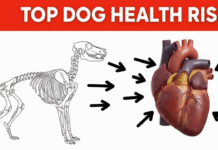Last Updated on June 14, 2021 by Dogs Vets
How are human emotions different from animals?
What does it feel like to be a dog?
The main difference between animal emotions and human emotions is that animals don’t have emotions mixed up like normal humans.
Animals are not ambivalent; they do not have love-hate relationships with each other or with humans. This is one of the reasons why humans love animals so much; animals are loyal.
If an animal loves you, it will love you no matter what. It doesn’t care what you look like or how much money you make.
That’s another link between autism and animals: autistic people also have mostly simple emotions. That’s why normal people describe us as innocent. Autistic people’s feelings are direct and open, just like animals’ feelings. We don’t hide our feelings and we are not ambivalent.
Neither are children. Emotionally, children are more like animals and autistic, because children’s frontal lobes are still growing and do not mature until sometime in early adulthood.
The frontal lobes are one big associative chorus that binds everything together, including emotions like love and hate, which would probably be better kept separate.

This is another reason why a dog can be like a human child: children’s emotions are straight and loyal like a dog’s.
A seven-year-old boy or girl runs through the house to greet their father when he comes home from work, just like a dog.
I think animals, children, and autistic people have simpler emotions because their brains are less able to make connections, so their emotions are more disconnected.
Nobody knows why an adult autistic person has trouble making connections because our frontal lobes are normal size. The autistic brain is like a corporate office building the same size, where the only way to talk to someone else is by fax.
There’s no phone, no email, no messengers, no people to walk around with. Just fax machines. So the result is a lot less stuff and everything starts to fall apart. Some messages get through okay; other messages get distorted if the fax is misprinted or the paper jams; other messages don’t get through at all.
The point is that although autistic people have normal-sized neocortexes with normal-sized frontal lobes, our brains function as if our frontal lobes were either much smaller or completely undeveloped.
Our brains function more like a child’s or an animal’s brain, but for different reasons.
When the different parts of the brain are relatively separate and don’t communicate well, you end up with simple and clear emotions because of compartmentalization.
A child can be furious with their mother or father one second, then completely forget about it the next, because being mad and being happy are separate states. The child jumps from one to the other depending on the situation.
With animals, you see exactly the same thing. Strong emotions in animals are usually as a sudden thunderstorm, they blow in and then blowback. Two dogs living together in the same house can growl one second and then be best friends again the next.
It takes normal people a lot longer to get over an angry emotion and even when a normal adult gets over a bad emotion, they have a permanent link between the angry emotion and the person or situation that made them angry.
When an ordinary person gets angry at a loved one in a rage, his brain grasps the anger and love and remembers it. Thanks to his highly developed frontal cortex, which links everything to everything else, his brain learns mixed emotions about that person or situation.
Do animals really have emotions?
One of the hottest questions in the study of animal behavior is “Do animals really have emotions?“. And the simple and correct answer is: “Of course they do.”
Just look at them, listen to them, and if you dare, smell the scents that emanate from their interactions with friends and foes. Look at their faces, their tails, their bodies, and most importantly, their eyes.
What we see on the outside tells us a lot about what goes on in the animal’s head and heart. Animal emotions are not so mysterious.
But now there are far fewer skeptics; prestigious scientific journals publish essays on the joy of rats, the grief of elephants, and the empathy of mice, and no one bats an eyelid.
The real issue is not whether animals have emotions, but why animals’ emotions have evolved. Put simply, emotions have evolved as adaptations in many species.
They act as the social glue that binds animals to each other, and also catalyze and regulate a wide range of social encounters among friends and foes.
Emotions allow animals to behave adaptively and flexibly, using a variety of behaviors in a wide range of settings. Studies have shown that mice are empathic rodents, but it turns out that they are also fun.
We also read stories of pleasure-seeking iguanas; amorous whales; angry baboons; elephants suffering from psychological flashbacks and post-traumatic stress disorder (PTSD – elephants have a huge hippocampus, a limb brain structure important for processing emotions); grieving otters, magpies, and donkeys; a sensitive fish; and a seeing-eye dog who has a ‘fully blind dog’ for a mate.
Today, the paradigm has shifted to the extent that the burden of proof now falls on those who still maintain that animals do not experience emotions.
We might expect to find close, enduring, and pleasant emotional relationships between members of the same species, but unlikely relationships also occur between animals of wildly different species, even between animals that are usually predators and prey!
To argue against the existence of emotions in animals is bad biology. Scientific studies in evolutionary biology, cognitive ethology (the study of animal minds) and social neuroscience support the view that many and diverse animals have rich and deep emotional lives. (Here I focus on mammals, although there are data suggesting that birds and perhaps fish experience pain and suffering in addition to emotion.)
Mirror neurons help explain feelings such as empathy. The study of these neurons supports the notion that individuals can sense the feelings of others.
Mirror neurons allow us to understand the behavior of another individual by imagining ourselves performing the same behavior and then mentally projecting ourselves into the shoes of another person.
The extent to which this species is shared by different species remains to be seen, but there is convincing evidence that humans are not alone in possessing it. Diana’s monkeys and chimpanzees help each other for food, and elephants comfort others in distress.
How are human emotions different from animals
Mirror neurons also help to explain observations of rhesus monkeys, who do not accept food when another monkey is suffering for doing so, and empathic mice, who respond more strongly to painful stimuli after observing other mice in pain.
The boundaries between them and us are blurred and permeable, and studying animals’ emotions helps inform the big question of who we are.
The other big question that answers emerge from studying animal emotions is, “Can animals be moral beings?” In the evolution of this phenomenon, which I call wild justice, I argue that they can.
Take Note: Many animals know wrong from wrong and live by a moral code.
When people tell me they love animals because they know creatures and then start abusing them, I tell them I’m glad they don’t love me.
I often ask the researchers who do invasive work with animals or people who work on factory farms: ‘Would you do that with your dog?’ Some people cringe when they hear this question, but if people don’t do to their dogs what they do every day to other dogs or mice, rats, cats, monkeys, pigs, cows, elephants, or chimpanzees, we need to know why.
There is no doubt that when we are talking about what we can and cannot do to other animals, it is their emotions that should be driving our discussions and acting on our behalf.
Emotions are gifts from our ancestors. We have them and so do other animals. We must never forget that. We can always do better when it comes to animal welfare. Most of the time, ‘good welfare’ is not good enough.
What it’s like to be a dog
As I am not a dog, I can only guess what they feel based on the physical cues my dogs give me.
I know from my own experience that dogs that are not happy in kennels are not trained to go to sleep in there and eat.
Dogs in animal control facilities are never happy until a person comes to see them and thinks they might have a chance to get out.
My family has adopted 3 dogs from animal control and other shelters on D-Day. They looked sad, scared and the last one was just pathetic the next day. He was so sick we had to take him to the vet for a visit in the car and once they’re in the hospital overnight. It took over a week of love and medication to get her better.
I suppose dogs and cats are likely to feel the same way unless the dog is damaged by severe neglect or physical abuse from a relative, like another rescue dog story.
He was a complete nightmare in the house. He tore things apart and dragged the whole house through the trash, pooped where he slept and didn’t care.
They loved him anyway and put him to bed at night so he could stay in the house with us. They cleaned his crate every morning and gave him a bath, conditioned his skin and fur to prevent over-drying, took him outside, and tried to play and exercise him.
He was not trainable and did not play like other dogs. They still cuddled him, fed him, and loved him like he was one of our children. It was really hard.
Researchers have developed a catalog of facial expressions associated with different emotions in dogs. The two eye muscles are particularly good at expressing worry, sadness, or attention.
The eyebrow on the left side of the face is more active when dogs see their owners, probably because it corresponds to the right side of the brain, which controls emotional expression. And your puppy’s tail wags on your return become more intense the longer you’re gone.
Some animal researchers have used infrared thermography to look at changes in a dog’s ear temperature in different contexts: it drops when dogs are alone and anxious, and rises when their owner returns.
But recent scientific history also shows inconsistencies in the way we think about the animal experience. Over the past century, Western science has typically refused to attribute emotions to non-human animals.
This denial stemmed from caution. Emotions are subjective experiences; sometimes they are opaque even to ourselves, so we have to try to connect with them.
Observing dogs scientifically, I dare to use emotional terms to describe their behavior. With other people, we assume that when we see them experiencing an emotion, we have an idea of what that emotion “feels” like to them.
But we cannot assume that a dog’s experience of what appears to be curiosity or delight is exactly the same as ours. Although there are countless similarities among mammals, the experiences lived by different species – and individuals of one species – are very different.
My own view is that if our senses were transplanted into a dog’s body, we would not feel the flood of sensations exactly like our own.
We see dogs with their lips going up from the edges and assume they are smiling and happy, but this ‘smile’ is simply a feature of their anatomy.
We used to read their innocent-looking expressions as shame for having done something wrong, but research in my lab has shown that this expression is better understood as appeasement, an attempt to deflect human anger.
Without definitive evidence from an animal’s subjective experience, scientists say, how can we be sure it is feeling fear or pain at all?
At the same time, much medical and psychiatric research operates on the assumption that dogs have emotions similar to our own.
For example, in order to prove the efficacy of an anti-anxiety drug for humans, the drug must first be tested on an animal model.
If anyone still argues that dogs cannot be kept depressed or benefit from anti-depressant drugs, they are walking back in time to the 1960s, when psychologist Martin Seligman developed the idea of ‘learned helplessness.
In his study, repeatedly shocked dogs with no means of escape accepted their fate enough that even when given a way out, they sat passively and immobile. They had learned to feel helpless – they had been suffering from what we might call severe depression.
Fact Check
We strive to provide the latest valuable information for pet lovers with accuracy and fairness. If you would like to add to this post or advertise with us, don’t hesitate to reach us. If you see something that doesn’t look right, contact us!
Reference: Wikipedia, Thebark and Washingtonpost

















